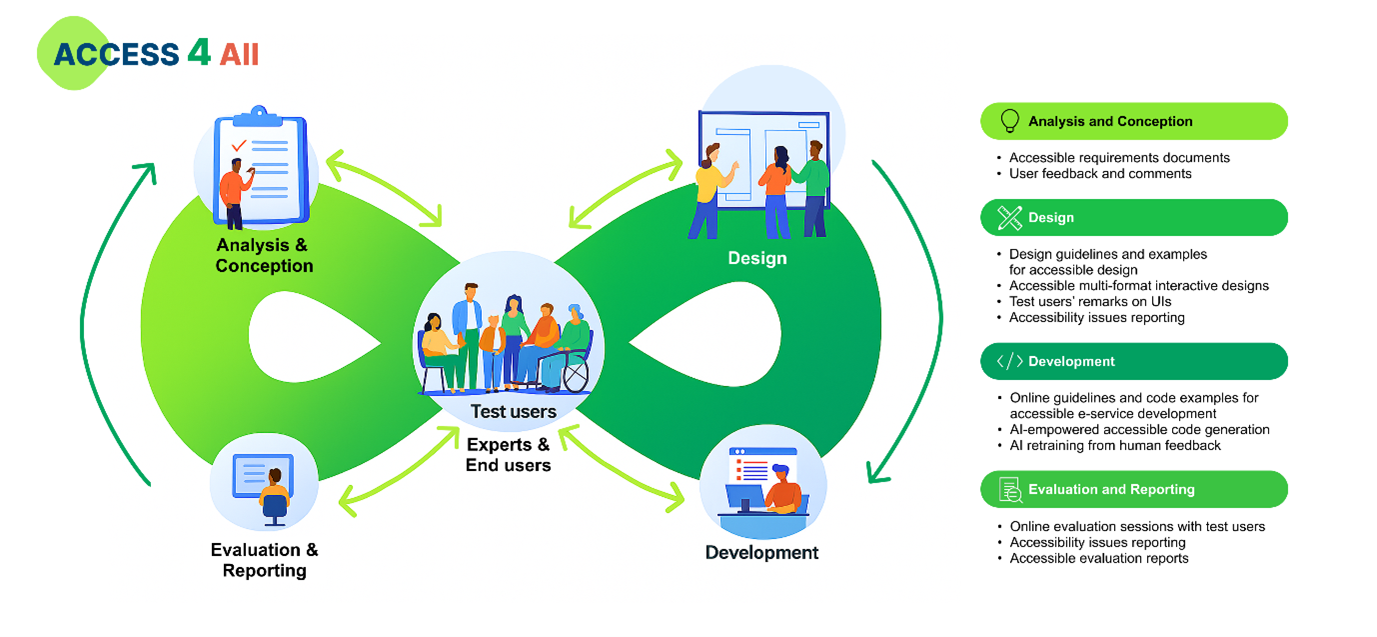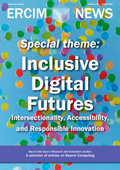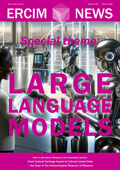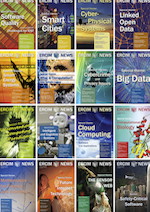by George Margetis, Stavroula Ntoa and Constantine Stephanidis (FORTH-ICS)
For more than three decades, the Human–Computer Interaction Laboratory at FORTH-ICS has pioneered research and development in Design for All and Universal Access. Today, these principles are more relevant than ever as society faces global challenges and transitions to AI-enabled digital environments, necessitating new methodologies and tools to make technology accessible to all.
Our societies are confronted with pressing global challenges, regarding peace, dignity, and equality on a healthy planet [L1], while progress toward the United Nations’ 17 Sustainable Development Goals (SDGs) has stalled or even regressed in several areas. Addressing these challenges requires collaboration and cooperation across disciplines, organizations, and societies. In the field of information and communication technologies (ICT), a key concern for promoting equity and human well-being is ensuring the accessibility of technology to all users. Digital accessibility attracted the attention of scholars and practitioners in the Human-Computer Interaction (HCI) field since the 1980s, and has seen commendable advancements across various domains; however, there are still several challenges to be addressed.
In this context, the HCI Laboratory of FORTH-ICS [L2] introduced the principles of Universal Access and Design for All to the international literature in the early 1990s [1]. Universal Access aims to enable individuals to access products and services from anywhere and at any time, using a range of computing platforms and devices. It encompasses various dimensions of diversity that arise from the wide range of user characteristics, the evolving nature of human activities, the different contexts in which access occurs, the increasing availability and variety of information, and the proliferation of various technological platforms. Design for All, introduced as an approach to achieve Universal Access, is informed by fundamental HCI approaches, notably Human-Centered Design (HCD), accessibility, and assistive technologies. In more detail, Design for All aims to move beyond designing for a hypothetical “average” user, and instead to proactively apply principles, methods, and tools to create ICT products and services accessible and usable by all, without the need to resort to a posteriori product or service adaptation or to specialized design.
In addition to the establishment of principles and theoretical frameworks, tools for the implementation of the Design for All approach have been proposed. A key notion that emerged was user interface adaptation, referring to the capability of software products to automatically modify their interactive behavior, and was further classified into static (adaptability) and dynamic adaptation (adaptivity). Early approaches included adaptive web browsers and games, while more recent efforts involve intelligent systems, such as advanced driver assistance systems and AI-powered Intelligent User Interfaces, which consider factors like user stress and real-time behavior into their decision-making. Achievements in the field also included advancements in custom interaction techniques and assistive technologies for various disability groups, as well as the development of universally accessible applications and services for various everyday life domains.
Overall, the path of digital accessibility reflects technological changes and societal priorities. In the 1980s and early 1990s, accessibility was approached reactively, primarily through assistive technologies. While valuable, this approach was cost-ineffective, struggled to keep pace with rapid technological evolution, and could not guarantee equitable access for all. The introduction of Design for All and Universal Access marked a paradigm shift, promoting proactive and systematic integration of accessibility into the design process itself. From a societal perspective, this paradigm shift was manifested by advances in our understanding of disability [2]. Definitions moved from the ‘medical model’ to the ‘social model’, and later to the ‘ICF classification model’ introduced by the World Health Organization (WHO), separating functioning limitations from disability, with the latter referring to impairments, activity limitations, and participation restrictions experienced by a person, highlighting the negative aspects of the interaction between a person's health condition and various environmental and personal factors.
In the technological domain, another profound shift was introduced by the pervasiveness of technology, achieved through the proliferation of mobile devices, equipping users with versatile computing power, acting as an assistive tool, but also introducing new accessibility barriers due to poor design of the developed applications and services. Today, the focus is shifting once again from the well-defined desktop and mobile domains to the more complex landscape of intelligent environments and AI-enabled systems. These advancements present both opportunities and risks.
AI-powered adaptation has the potential enable highly accurate personalization of technology to the real-time needs and requirements of a user. Nevertheless, algorithmic bias, lack of transparency, barriers in understandability and insufficient involvement of end-users in system design threaten inclusivity. This underlines the urgent need for a Human-Centered Universally Designed Artificial Intelligence, ensuring transparency, fairness, and inclusiveness from the outset. By involving humans throughout the design and development lifecycle—selecting datasets, training models, validating decisions—Human-Centered AI integrates ethical, social, and usability considerations into technical development [3]. Here, the tradition of HCI research can provide valuable expertise to guide the design of AI systems that are transparent, accountable, and inclusive.
In this direction, ACCESS4ALL [L3], an internal project in progress at the HCI Lab, provides a new methodological AI-empowered human-centered approach in developing accessible digital services ‘by design’. It offers an innovative online platform with easy-to-use tools and clear guidance to practically support the variety of professionals involved in digital service development, while also facilitating the effective engagement of end-users, including individuals with disabilities (Figure 1). The objective of the proposed solution is to render digital accessibility a ‘built-in’ part of a collaborative design process, empowered by cutting-edge AI technologies.

Figure 1: Access4All conceptual diagram.
Links:
[L1] https://www.un.org/en/global-issues
[L2] https://www.ics.forth.gr/hci
[L3] https://www.ics.forth.gr/hci/human-centered-design-approach-development-e-services-accessible-all
References:
[1] C. Stephanidis, “User Interface Adaptation and Design for All,” in Human-Computer Interaction in Intelligent Environments, C. Stephanidis and G. Salvendy, Eds., vol. V, Human-Computer Interaction: Foundations and Advances. Boca Raton, FL, USA: CRC Press, Taylor & Francis Group, 2024, pp. 44–76.
[2] S. Ntoa, et al., “Digital Accessibility for Users with Disabilities,” in Designing for Usability, Inclusion and Sustainability in Human-Computer Interaction, C. Stephanidis and G. Salvendy, Eds., vol. II, Human-Computer Interaction: Foundations and Advances. Boca Raton, FL, USA: CRC Press, Taylor & Francis Group, 2024, pp. 406–460.
[3] G. Margetis, S. Ntoa, M. Antona, and C. Stephanidis, “Human-Centered Design of Artificial Intelligence,” in Handbook of Human Factors and Ergonomics, 5th ed., G. Salvendy and W. Karwowski, Eds. Hoboken, NJ, USA: John Wiley & Sons, 2021, ch. 42, pp. 1085–1106. https://doi.org/10.1002/9781119636113.ch42
Please contact:
Constantine Stephanidis
FORTH-ICS, Greece










